SISN Frameworks and Classification Scheme
The concepts presented on this page are based on our paper “Implementation Science in Nutrition: Concepts and Frameworks for an Emerging Field of Science and Practice” published in Current Developments in Nutrition
Unpacking the ‘Black Box’ of Implementation
Historically, the implementation of a nutrition intervention or program focussed on educating and training frontline workers. While these are necessary components of the implementation process, the observed gaps between global nutrition targets and actual achievements show that education and training alone are insufficient actions. This existing approach is far too simplistic, and to date our understanding of the factors that predict or impede effective implementation is poor. We need to unpack this ‘Black Box*’ of implementation (Figure 1) so that our efforts are more impactful.
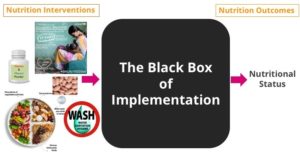
Figure 1:The Black Box* of Implementation (* A machine/system where the internal workings are a mystery)
Opening up this ‘Black Box*’ is the mission of Implementation Science (IS) and Implementation Research (IR), and SISN was founded in 2016 to champion this mission and provide a roadmap for change in nutrition implementation and research. One of the Society’s first goals was to establish a clear definition and framework to guide our activities.
Thankfully, a large body of data exists to inform SISN’s conceptual thinking. One of our main sources is the Consolidated Implementation Framework by Damschroder, which is based on 38 core constructs identified in a review of 20 existing frameworks. Given the wide range of interventions, policies and practices in nutrition, and the diversity of implementation settings and organizations, we adapted this framework to make it more applicable to nutrition.
The ensuing SISN Framework (Figure 2) is a summary of what lies within the ‘Black Box’ of implementation and can be used to guide planning and bring awareness to the areas that may influence implementation. The top-level Framework identifies Five Domains whose characteristics, capacities, dynamics and fit influence the quality of implementation. These Five Domains relate to:
- ‘Objects’ of implementation i.e. the distinctive idea, therapy, or behaviour that you are seeking to spread
- Implementing organization(s) and staff
- Enabling environment
- Individuals, households or communities i.e. the target of the intervention
- Implementation processes i.e. whether it is early initiation and scoping, the planning phase, the implementing phase, or sustaining phase.
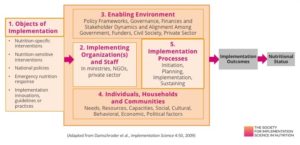
Figure 2: The Five Domains Whose Characteristics, Capacities, Dynamics and Fit Affect Implementation Quality
In order to be of more practical use to researchers and implementers, the Framework also needed to reflect the complexity underlying each domain. This expanded Framework (Figure 3), illustrates the specific factors that might affect each domain.
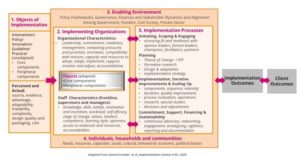
Figure 3: Potential Factors Within The Five Domains
This more detailed illustration of our Framework shows how each factor can affect implementation and potentially impact the outcome. Each factor, in turn, is influenced and shaped by the factors within the same domain, as well as factors in the other four, as such, each factor is part of an interactive system. This highlights the vital need to understand the system as a whole, not just the parts in isolation and should be one of the KEY CONSIDERATIONS from the point of view of individuals implementing nutrition programs.
So how can researchers and implementers use the SISN Framework to guide and improve their implementation efforts?
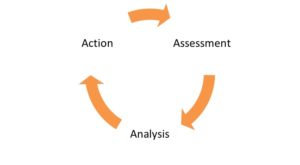
The ‘Triple A’ Cycle (UNICEF, 1997)
One strategy is to adopt the ‘Triple-A’ cycle: assess a problem; analyze its cause; take action based on your analysis.
The SISN Framework offers a list of potential influential factors which can inform the conduct of a ‘Triple-A’ cycle for any given project; assisting in identifying the bottlenecks and taking appropriate action. As such, the SISN Framework can help researchers design implementation strategies with their eyes wide open (anticipating and addressing various barriers and enablers in advance) and help them identify some intermediate indicators that should be measured and monitored during implementation so that they can learn how they change under different circumstances i.e. SISN’s definition of IR (Figure 5)

Figure 5: Definition of Implementation Research
While it sounds straightforward, IR can take many different forms. In acknowledgement of this, SISN has developed a Classification Scheme for IR (Figure 6) that segments activities by both the ‘object’ of implementation and also by the stage or phase of the implementation process, outlined as follows:
- Initiating and scoping
- Planning and design
- Implementing, iterative Improvement and scaling up
- Cross-cutting governance functions.
The SISN Classification Scheme for IR is intentionally all-inclusive because IR is about what tasks need to be informed by what kind of knowledge, NOT about the specific types of methods used. Of course, some methods may be more applicable than others in any given situation, but the Classification Scheme does not privilege one type of method over another.
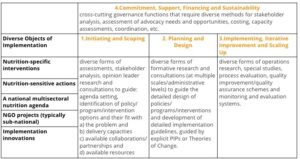
Figure 6: SISN’s Classification Scheme of Implementation Research
SISN’s new Knowledge Hub is populated with examples of real-life case studies that are categorized and tagged based on where they sit within this matrix. Many of these examples are cross-cutting and may not fit nicely within one cell but it still provides a way of thinking about where in the implementation process a specific project ‘fits’ and what type of research questions and methods might be appropriate to use.
The SISN Framework and Classification Scheme reflect the breadth, depth and complexity of implementation in the real-world. This complexity, together with the many barriers in the Five Domains, and the short timelines for implementation mean that it is NOT feasible to conduct IR to “systematically assess and address (ALL) potential weaknesses within and between each of the five domains during all phases of the implementation process”. Expecting implementers to wait for the findings of IR studies to inform their implementation approaches is too idealistic, however, a practical solution is offered by how we think about IR as distinct from IS (Figure 7):

Figure 7: Definition of Implementation Science
IS is NOT just new empirical research, it is “the science of implementation”, and as a science it systematically organizes and curates accumulated knowledge about a phenomenon in the world (which includes an existing body of knowledge in the IR literature). Therefore, in addition to undertaking new investigations, there is a need to improve the utilization and uptake of current implementation knowledge, including the application of existing frameworks, guidelines and tools.
This thinking is brought together in SISN’s Integrative Framework for IS (Figure 8).
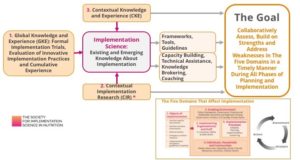
Fig 8: SISN’s Integrative Framework for Implementation Science in Nutrition
Our overarching goal to “collaboratively assess, build on strengths and address weaknesses in the five domains in a timely manner during all phases of planning and implementation” can be achieved by applying existing and emerging knowledge about implementation. The most practical and timely way of doing this is identifying existing frameworks, tools, and guidelines, adapting them as necessary and making them available to implementers through some form of capacity building, technical assistance, knowledge brokering or coaching with staff in the implementing organization. Using these available products is the most efficient way of overcoming bottlenecks, but it is not sufficient in all cases i.e. where a knowledge-gap exists. In these instances, we need to create new knowledge. For SISN, ‘knowledge’ includes three broad and complementary categories:
- Contextual Knowledge and Experience (CKE) – The (often tacit) knowledge and experience of actors in a given country used in everyday decision-making when planning and implementing programs
- Contextual Implementation Research (CIR) – Practical inquiries embedded in and connected to implementation in a given country or context
- Global Knowledge and Experience (GKE) – Published or unpublished findings, frameworks, tools and guidelines from more formal and rigorous trials and evaluation studies conducted in other countries.
All three of these knowledge types contribute to the ever-growing body of knowledge on implementation that we call IS, but they can also have direct effects on the overarching goal.
The SISN Frameworks and Classification Scheme presented here advance SISN’s efforts to develop a common understanding of IS in nutrition. For many researchers, policy-makers, implementers and others working in this field, these principles represent a shift in our current thinking and highlight a need for significant change in common practices and approaches. The SISN Frameworks and classification scheme aim to provide a conceptual roadmap for making these changes and ultimately improving the quality of implementation in a practical and timely fashion, by systemizing, integrating, and utilizing diverse forms of knowledge, at all stages of the implementation process and in relation to multiple domains that affect implementation quality.
Key Resources
Powerpoint Slides of the SISN Framework and Classification Scheme
These slides may be copied in any form and used for non-commercial purposes provided that the content of any copy is not altered and, it is clearly indicated that SISN is the originator of this material.
Journal Papers
- Tumilowicz A, Ruel MT, Pelto G, Pelletier D, Monterrosa EC, Lapping K et al Implementation Science in Nutrition: Concepts and Frameworks for an Emerging Field of Science and Practice (2019) Current Developments in Nutrition 3 (3) nzy080
- Damschroder, L.J., Aron, D.C., Keith, R.E., Kirsh, S.R., Alexander, J.A. et Lowery, J.C. (2009). Fostering implementation of health services research findings into practice: a consolidated framework for advancing implementation science. Implementation Science, 4: 50. doi: 10.1186/1748-5908-4-50.
- Theobald S, Brandes N, Gyapong M, El-Saharty S, Proctor E, Diaz T et al Implementation Research: New Imperatives and Opportunities in Global Health(2018) The Lancet 393 (10160) 2214-2228
- Peters DH, Tran NT, Adam T Implementation Research in Health: A Practical GuideAlliance for Health Policy and Systems Research, World Health Organization, 2013.
- Warren AM, Frongillo EA, Rawat R. Building Implementation Science in Nutrition, (2020) Advances in Nutrition, nmaa066,
Related Webinars
- Implementation Science in Nutrition: Rationale, Frameworks and Introduction to the Society
- The Consortium of Universities for Global Health Webinar on Implementation Science in Nutrition
Related Webpages
- The Implementation Science System Toolkit: An operational systems model for applying a implementation science approach
- Knowledge Hub : search our ever-growing database of journal articles, papers, case studies, reports and presentations on IS/IR in nutrition
- FAQ: frequently asked questions about IS
- Events: upcoming training, courses, and scientific meetings in IS/IR
We welcome your thoughts, comments and questions on the above. Please send any feedback (including additional case study examples) to: info@implementnutrition.org.
